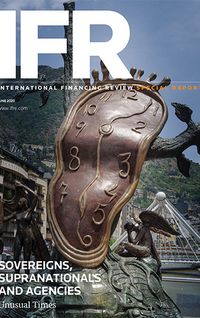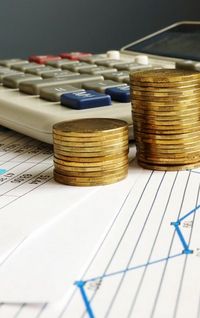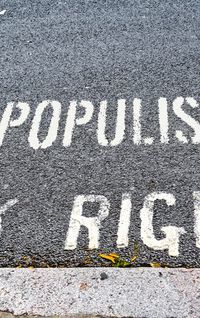African nations require an immediate bilateral debt standstill to cope with a humanitarian crisis during the Covid-19 outbreak but should not be allowed to write down their sovereign debt, as it would make it harder for them to access international capital markets in the future.
The International Monetary Fund is forecasting that Africa’s GDP will shrink by 1.6% in 2020 - its worst result ever recorded - while the World Bank has warned the continent could slip into its first recession in 25 years. Until now, the region has largely escaped the direct health impact of Covid-19 but the global economic slump and extended lockdowns in many African nations will exact a severe economic toll on the region. The UN Development Programme says almost half of all jobs in Africa are at risk.
The issue for many African nations is the high level of public debt built up again since they enjoyed US$100bn of debt relief under the Heavily Indebted Poor Countries Initiative (HIPC) and the related Multilateral Debt Relief Initiative (MDRI) during the past 25 years.
Hard figures for African debt – especially that owed to China – are difficult to obtain, but sub-Saharan Africa had total external debt of US$583bn at the end of 2018, according to World Bank. China is believed to account for the biggest slice of Africa’s external debt at US$152bn, according to the China Africa Research Initiative (CARI) team at Johns Hopkins University.
One of the biggest transformations has been the nature of the debt that African nations have taken on. Until 2010, it mostly took the form of bilateral or multilateral credit but, since that time, many sovereigns have assumed commercial debt with a wide universe of private sector creditors, including commercial banks, asset owners and managers, commodity brokers, export credit agencies, sovereign wealth funds, hedge funds and non-financial companies.
In April, for example, 21 African countries had outstanding foreign currency debt obligations in the form of Eurobonds of roughly US$115bn, according to Moody’s.
About half of the countries in the sub-Saharan region have seen their debt stocks double – and in some instances more than triple – since 2009. The IMF expects the simple average public debt level for sub-Saharan nations to jump temporarily to 64% of GDP in 2020 from 58% in 2019 (compared with the projected decline to 56% it made in its October 2019 forecast). However, the fund says this picture masks considerable differences, as a number of countries are expected to see a surge in debt levels ranging from 10 to 25 percentage points of GDP, reflecting lower output, larger fiscal deficits and exchange rate depreciations.
“The biggest headache for many African countries is a shortage of hard currency during this crisis,” said Gregory Smith, emerging markets strategist at M&G Investments. “They have seen big reductions in their exports; their remittances from abroad are way down; tourists are not coming; and there is little foreign investment. Generally, there is less hard currency flowing into the economies and a bilateral debt standstill at this time would help them out significantly.”
African sovereigns were supposed to make US$55bn in interest and amortisation payments this year (around one-third in interest and two-thirds in amortisations), according to M&G Investments.
The continent’s finance ministers have called on multilateral organisations and the European Union to provide the region with a US$100bn economic stimulus package this year, of which almost half would come from a freeze on debt servicing. They say an additional US$50bn may be needed in 2021. Ken Ofori-Atta, Ghana’s finance minister, has called for an ‘HIPC on steroids’ to help countries manage the crisis.
LEADERSHIP CHALLENGE
One of the biggest hurdles to a coordinated African debt freeze is a current lack of leadership at an international level. President Donald Trump does not seem interested and the British government has not become deeply involved. France’s President Emmanuel Macron has said that ‘we must ensure African economies have breathing room’ at this time but, in the absence of international leadership, the main initiatives are being driven by officials at the IMF and World Bank.
“We are seeing a lack of leadership globally at the moment, full stop,” said Stuart Culverhouse, head of sovereign and fixed income research at Tellimer Research, a London-based investment consultancy. “Political leaders in the West have a lot on their plates at the moment and do not have much time to think about African debt relief.”
In sub-Saharan Africa, 22 countries are eligible for IMF debt relief through its existing Catastrophe Containment and Relief Trust framework, totalling US$05m for the first six months. As of May 12, 19 of these countries had received relief of around US$180m already. Furthermore, close to 40 sub-Saharan African nations have requested emergency financial assistance from the fund, of which 25 requests have been approved already. Nigeria, Africa’s biggest economy, has received a US$3.4bn bailout from the IMF for the first time and South Africa requested one for the first time at the start of May.
“Our members need us now more than ever,” said Abebe Aemro Selassie, director of the African Department at the IMF. “Africa is facing an unprecedented health and economic crisis, which threatens to reverse much of the region’s progress over recent decades, and which may also weigh on growth prospects for years to come.”
The most important debt relief initiative – known as the Debt Service Suspension Initiative (DSSI) – came from the G20 grouping of the world’s largest economies – spurred on by the IMF and World Bank – in April. They agreed to freeze bilateral government loan repayments for 76 low-income countries – including many located in Africa – until the end of the year and called on private sector creditors to participate on a voluntary basis. The standstills are supposed to be net present value neutral.
“We support a time-bound suspension of debt service payments for the poorest countries that request forbearance,” the G20 said in a statement.
DSSI starts on June 1 and eligible countries must be ‘current’ on any debt service payments to the IMF and the World Bank (which rules out Zimbabwe, for example). The initiative has the potential to free up to US$20bn in debt payments for low-income countries. It is believed US$8bn alone was due in payments to China this year. DSSI countries also owe some US$13bn to private creditors through the remainder of this year, according to trade body the Institute of International Finance.
However, the G20’s offer covers just one-quarter of the debt service payments that Africa is due to make this year, according to analysts.
The agreement has two main problems. First, China is a G20 member and a signatory to the deal but a large proportion of its loans to Africa have been made on a commercial basis by government agencies, quasi-public corporations and by state-owned banks, such as China Development Bank and Exim Bank of China. It is not yet clear whether they are prepared to waive debt interest without seizing collateral. Second, the agreement does not cover the considerable debt – including Eurobond debt – that Africa has accumulated with private sector creditors during the past decade.
“Personally, I see two issues with the G20 initiative,” said Scott Morris, a senior fellow at Center for Global Development (CGD), a Washington DC-based think tank. “The first relates to delivery on the commitments that have been made – whether all countries including China will fully participate – and the second relates to whether all types of creditor – including private sector – will participate. The private sector creditors are the most difficult part of the equation, as they make up a very diverse community and there is no single platform by which they could come to an agreement.”
Chinese banks and government agencies are unlikely to agree to a blanket waiver of debt interest but will want to renegotiate every loan on a case-by-case basis. In Beijing, a committee led by China’s Ministry of Finance and involving the Ministry of Commerce, Exim Bank of China and China Development Bank carefully considers whether applicants for relief are truly unable to service each troubled loan on its original terms. This complicated, loan-by-loan scrutiny differs from Paris Club debt workouts, which usually treat the entire debt stock. CGD says it has assessed many of the loan agreements that China has signed with low-income countries and these include some kind of collateral requirement.
Ghana's finance minister Ken Ofori-Atta says he expects more from Beijing. “My feeling is that China has to come on stronger,” he said at the end of April.
Zambia is one of the African sovereigns with the most debt distress and the markets are pricing in a sovereign debt default (at the start of April, its spread over US Treasuries had jumped to 4,425bp). The IMF is forecasting the country’s government debt will surged to 110% of GDP this year from 85.7% in 2019. Total external debt reached US$11.3bn at the end of 2018; it is calculated that around one-third is owed to China.
“Chinese companies are putting pressure on the Zambian Finance Ministry to avert further delayed payments or defaults on their loans,” said Robert Besseling, executive director at EXX Africa, a political consultancy, in a report in January. “However, Chinese companies are refusing to restructure existing debts and are instead seeking fresh collateral in case of default.”
According to media reports, China Civil Engineering Construction Corporation is seeking a restructuring of loan agreements that could involve Zambian copper mining assets being placed as collateral.
The nation has requested an IMF bailout but the fund has twice before withheld a credit facility amid warnings that the country’s high debt and shrinking foreign exchange reserves leave its economy vulnerable.
“Zambia has not yet received any funding from the new emergency facilities.” said the IMF’s Selassie. “Discussions are ongoing.”
Angola is another African country in deep debt trouble. The IMF is forecasting its total government debt will reach 132.2% of GDP – estimated at US$89bn this year – up from 109.8% last year. The country received up to US$42.8bn in Chinese loans by 2017 – the most of any African nation – and repays its debt partly by channelling its crude oil to China.
The country’s economy is expected to contract by 1.4% this year and it is forecast to run a fiscal deficit of 6% of GDP this year, according to IMF. The yield on the sovereign’s 10-year Eurobond reached 35% at end of March, before falling back to 25% in April. At the start of March, Fitch Ratings lowered the country’s long-term credit rating to B- from B.
Furthermore, in mid-April, Nigeria, Ghana, Gabon and Cameroon all had Eurobonds that traded at spreads of more than 1,000bp over Treasuries, the point above which the securities are considered to be distressed debt.
“The poor relationship between the United States and China does make it harder to achieve a consensus about an African debt standstill,” said CGD's Morris. “They have different interpretations of DSSI and probably will want to implement it in different ways. Under many of the loan agreements, China does have a legal right to convert a loan into equity and to seize collateral. The question is whether it would exercise that right in the midst of a global crisis when the pandemic originated in China. Many Chinese banks and quasi-public corporations are likely to take a commercial attitude but it is not clear that the Chinese government would be so off politically that it would insist on debt equity swaps.”
On behalf of a crowd of private sector creditors, the Institute of International Finance is heavily involved in talks with African finance ministers about debt suspensions. However, it says it will be an uphill battle for African sovereigns to navigate the maze of creditors.
“The scope of private sector participation [in DSSI] remains to be clarified and will likely be on a case-by-case basis,” said the IIF in its Weekly Insight report at the start of May. “This mainly reflects the heterogeneity of the private creditor base. Some creditors may face constraints on participation due to fiduciary obligations or regulatory considerations. Eligible sovereign borrowers - who would need to request the forbearance - will need to consider the implications for credit ratings and future market access.”
ACCESS DENIED
For many African finance ministers, their greatest fear is that even some kind of limited debt freeze could trigger a credit rating downgrade and make it harder for the sovereign to access international capital markets in the future. Moody’s said in mid-April that even voluntary delays in bond payments could prompt credit rating downgrades.
The possibility that Eurobond terms might be changed as part of the debt holidays has already added pressure to markets. Dollar and euro-denominated bonds issued by African nations carried an average yield of 10.2% on May 11, a level that would usually prohibit access to new funds.
However, the IMF’s Selassie does not agree. “The issue of moral hazard [from debt relief] is more valid when countries’ debt difficulties are policy-induced,” he said. “But in the case of the vast majority of countries, the debt pressures they now face are on account of the exceptional nature of the Covid-19 shock. This is a once-in-one-hundred-year event. An exceptional health and economic shock. The response has to be equally exceptional, including debt relief from all those creditors that can provide this relief.”
A major consideration for African finance ministers is what impact debt relief would have on their sovereign bond yield curves and on the yield curves of corporate borrowers from their countries. One of the most positive developments in the continent during the past decade has been the creation of sovereign yield curves, which have also enabled private sector companies to come to the market for the first time. Any sovereign downgrades by ratings agencies could make the cost of financing more expensive for private sector companies.
“One of the things we could see after the Covid-19 crisis passes is African countries doubling down on their economic reform programmes and making the enabling environment for the private sector better, improving the business climate,” said Nathan Belete, the World Bank’s country director for Senegal, Mauritania, the Gambia, Cabo Verde and Guinea Bissau. “Public expenditures will be so stretched that governments must attempt to stimulate the private sector. Economic growth is going to be absolutely vital for countries after the Covid-19 crisis passes.”
Romuald Wadagni, Benin’s Minister of Finance, is warning against international measures focused either on debt suspensions or writedowns. “These solutions will further tarnish the reputation of our governments and jeopardise their access to future financing,” he said. “Our countries will suffer from an implied deterioration of their perceived credit quality, which could impact their access to capital markets.
“A moratorium, whether desired or imposed, could even be considered in some loan documents as an event of default by private creditors, even if it only concerns bilateral public creditors. In addition to sanctions from rating agencies for defaulting on loan repayments, all our countries’ efforts to improve both the business climate and the perception of risk (as presented in the Organisation for Economic Co-operation and Development classifications and used to define the terms of many loans) would be simply destroyed.”
BRADY BUNCH
Many African sovereigns would like to convert some of their debt into longer-term, concessional paper to head off any risk of default – a sort of African version of Brady bonds. The United Nations Economic Commission for Africa, the African Union and a group of African finance ministers are designing a special purpose vehicle for the debt swap. The mechanism would have to be underwritten by a Triple A rated multilateral lender such as the IMF or World Bank, or one of the bigger G20 economies. It would be used to convert commercial debt into longer-maturity paper with a five-year grace period and lower coupons.
It could be similar to the 1989 Brady Plan that converted bank loans – mostly owed by Latin American countries – into new paper backed by US Treasury bonds. The US government is unlikely to guarantee the new instrument for African sovereigns but the World Bank and IMF might jointly guarantee the bonds with US consent.
However, many commentators believe this initiative is doomed to fail if it involved the IMF issuing additional Special Drawing Rights. The US government is opposed to this move, as most of the new funds would go to G20 countries that do not need it. Furthermore, without bondholder agreement, the ratings agencies warn that any attempt to renegotiate payments on sovereign bonds would be classed as a default.
African debt suspensions will be messy and protracted. Countries on the continent are likely to see a series of ad hoc debt standstills and restructurings of swaths of their public debt this year and next. If the looming recession in the region is worse than many analysts expect, there could be growing calls for a blanket debt writedown instead of a debt freeze, but this move could lock many African frontier markets out of the international credit markets for a long time.
Jason Mitchell
To see the digital version of this report, please click here
To purchase printed copies or a PDF of this report, please email gloria.balbastro@refinitiv.com
![]()




























